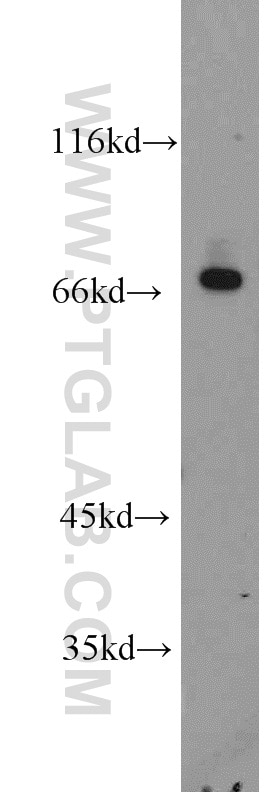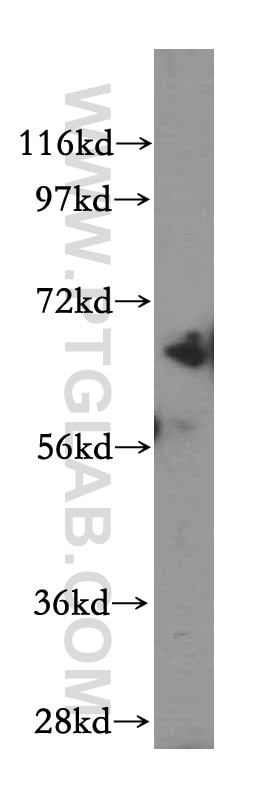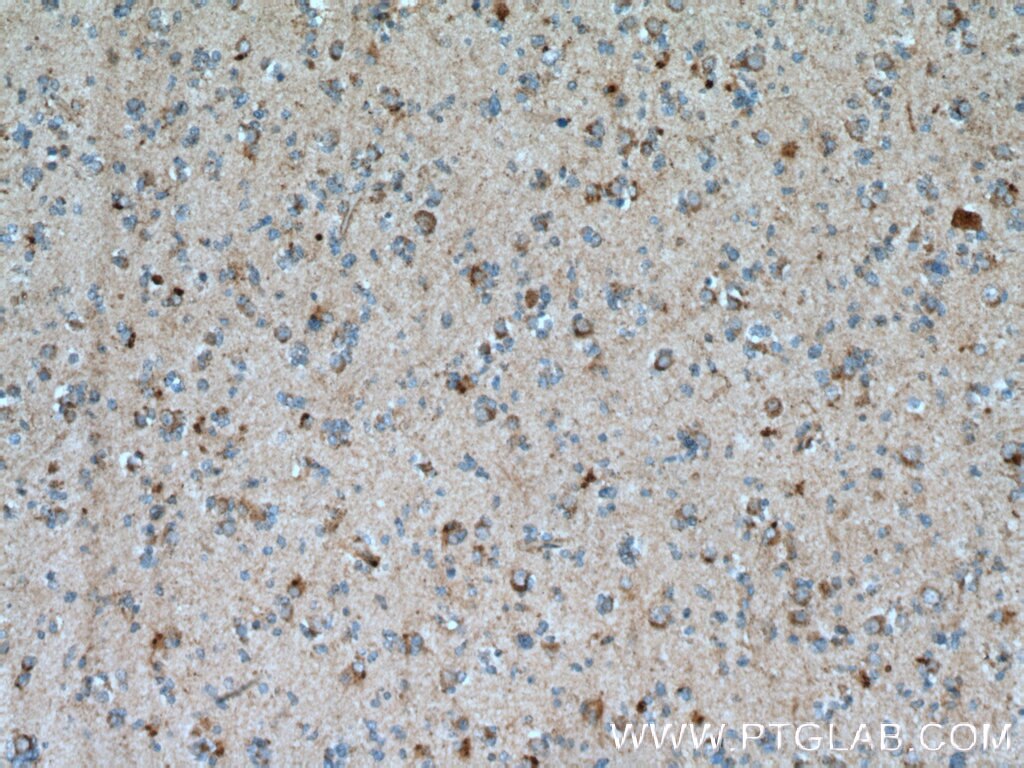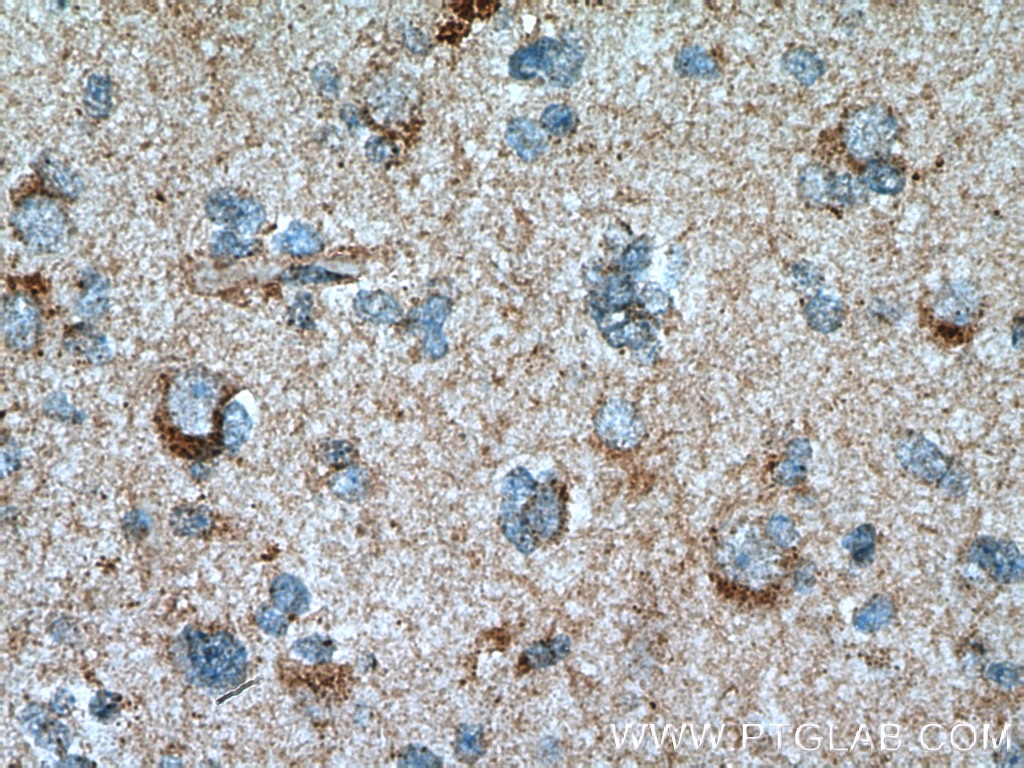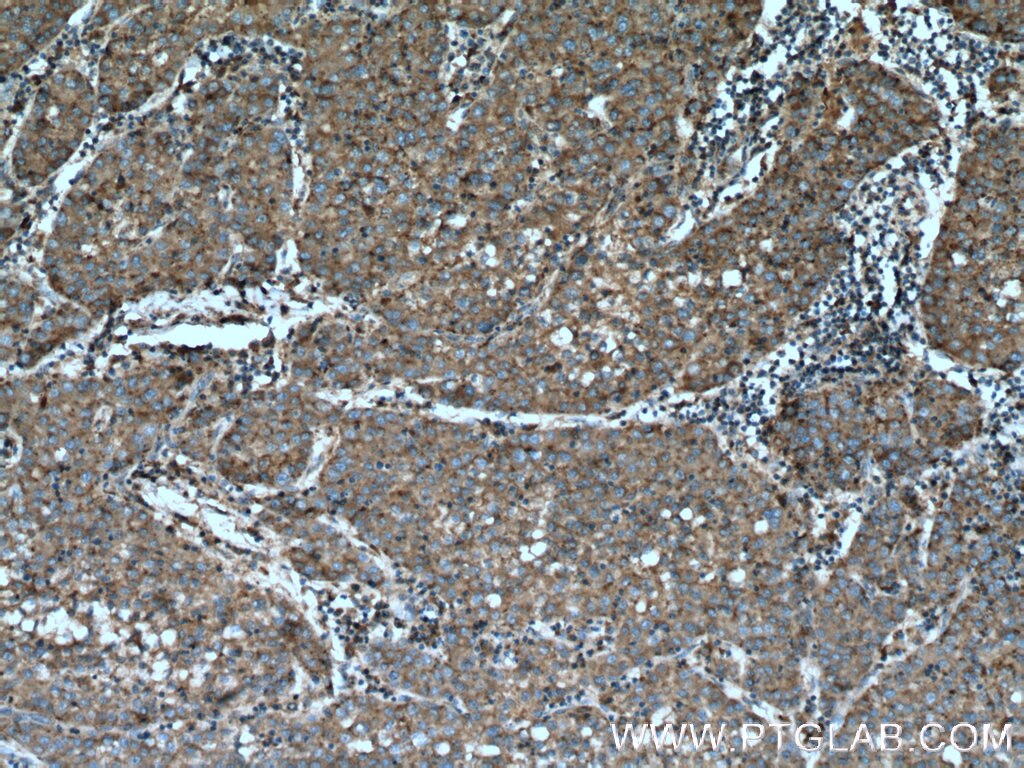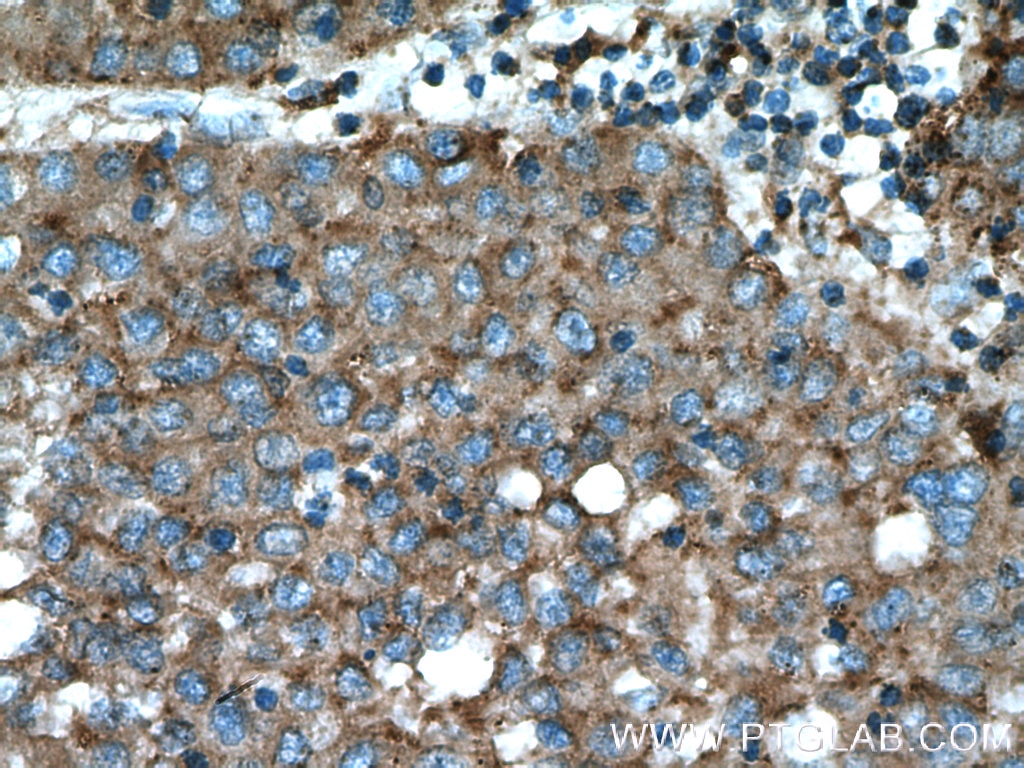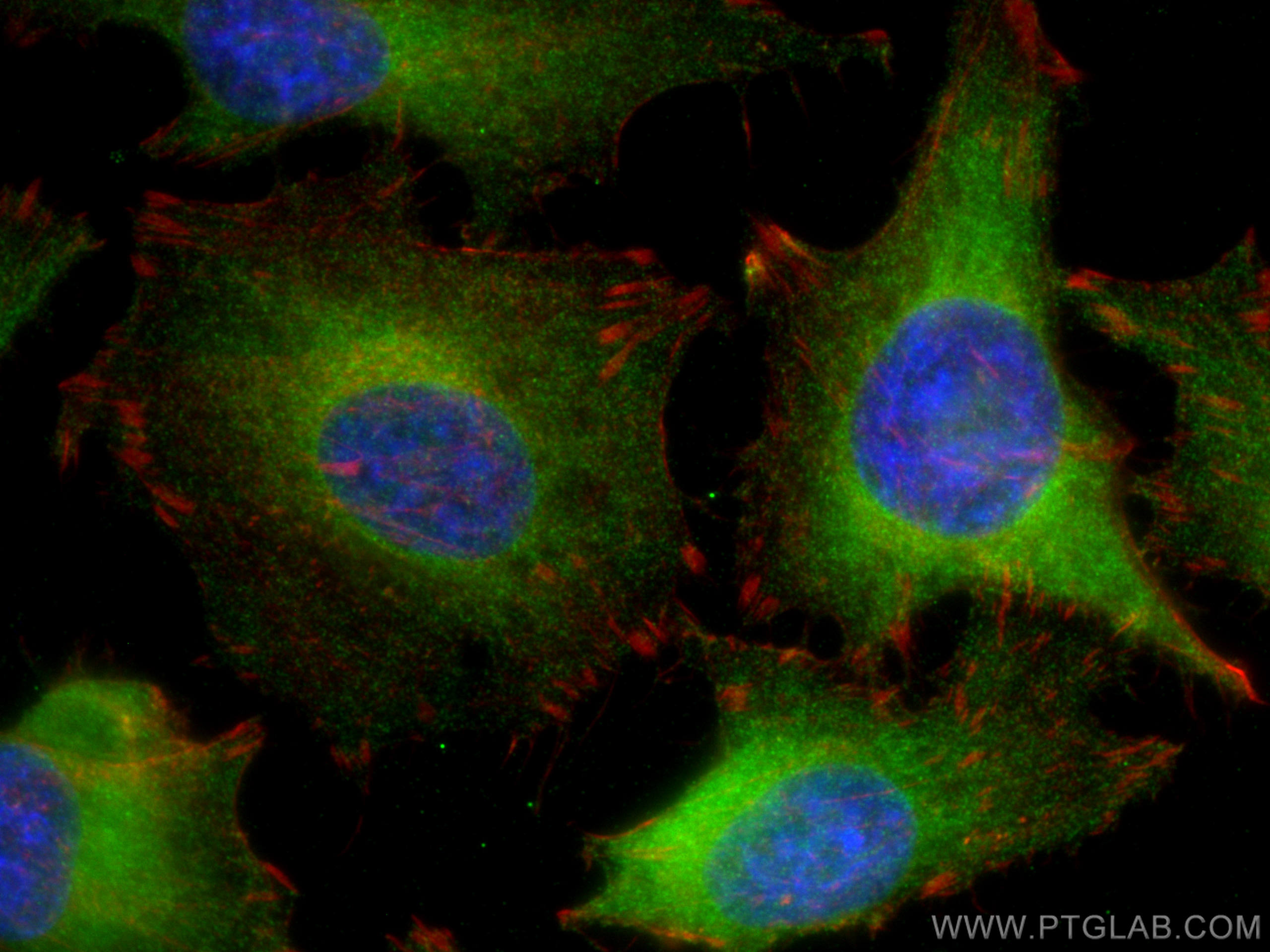Beta Galactosidase Polyklonaler Antikörper
Beta Galactosidase Polyklonal Antikörper für IF, IHC, WB, ELISA
Wirt / Isotyp
Kaninchen / IgG
Getestete Reaktivität
human, Maus und mehr (2)
Anwendung
WB, IP, IHC, IF, ELISA
Konjugation
Unkonjugiert
Kat-Nr. : 15518-1-AP
Synonyme
Galerie der Validierungsdaten
Geprüfte Anwendungen
| Erfolgreiche Detektion in WB | SH-SY5Y-Zellen |
| Erfolgreiche Detektion in IHC | humanes Gliomgewebe, humanes Leberkarzinomgewebe Hinweis: Antigendemaskierung mit TE-Puffer pH 9,0 empfohlen. (*) Wahlweise kann die Antigendemaskierung auch mit Citratpuffer pH 6,0 erfolgen. |
| Erfolgreiche Detektion in IF | HeLa-Zellen |
Empfohlene Verdünnung
| Anwendung | Verdünnung |
|---|---|
| Western Blot (WB) | WB : 1:500-1:1000 |
| Immunhistochemie (IHC) | IHC : 1:20-1:200 |
| Immunfluoreszenz (IF) | IF : 1:50-1:500 |
| It is recommended that this reagent should be titrated in each testing system to obtain optimal results. | |
| Sample-dependent, check data in validation data gallery | |
Veröffentlichte Anwendungen
| WB | See 17 publications below |
| IHC | See 8 publications below |
| IF | See 7 publications below |
| IP | See 1 publications below |
Produktinformation
15518-1-AP bindet in WB, IP, IHC, IF, ELISA Beta Galactosidase und zeigt Reaktivität mit human, Maus
| Getestete Reaktivität | human, Maus |
| In Publikationen genannte Reaktivität | human, Maus, Ratte, Rind |
| Wirt / Isotyp | Kaninchen / IgG |
| Klonalität | Polyklonal |
| Typ | Antikörper |
| Immunogen | Beta Galactosidase fusion protein Ag7792 |
| Vollständiger Name | galactosidase, beta 1 |
| Berechnetes Molekulargewicht | 76 kDa |
| Beobachtetes Molekulargewicht | 67 kDa |
| GenBank-Zugangsnummer | BC007493 |
| Gene symbol | GLB1 |
| Gene ID (NCBI) | 2720 |
| Konjugation | Unkonjugiert |
| Form | Liquid |
| Reinigungsmethode | Antigen-Affinitätsreinigung |
| Lagerungspuffer | PBS mit 0.02% Natriumazid und 50% Glycerin pH 7.3. |
| Lagerungsbedingungen | Bei -20°C lagern. Nach dem Versand ein Jahr lang stabil Aliquotieren ist bei -20oC Lagerung nicht notwendig. 20ul Größen enthalten 0,1% BSA. |
Hintergrundinformationen
What is the molecular weight of β-galactosidase (GLB1)?
The molecular weight of GLB1 is 76 kD, although this protein is known to have multiple isoforms with lower
molecular weight values.
What is the function of GLB1?
The common name of β-galactosidase is lactase. This enzyme is responsible for catalyzing the hydrolysis of
lactose to monosaccharide glucose and galactose. GLB1 also catalyzes hydrolysis of polymeric D-galactosyl
residues (PMID: 23526073, doi: 10.1088/1757-899x/263/2/022046).
How is GLB1 used in our food?
GLB1 isolated from bacteria, fungi, yeast, plants, and other sources has been applied to the manufacturing
of lactose-hydrolyzed products (PMID: 28500401).
How is GLB1 part of a positive feedback loop?
GLB1 transgalactosylates lactose, resulting in allolactose. Allolactose is the inducer for the lac operon and
binds to the lac repressor, prompting GLB1 synthesis (PMIDs: 23526073, 28500401, 26394634).
What organisms express GLB1?
GLB1 is ubiquitous in nature and is produced across kingdoms in plants, microorganisms, and animals.
Properties, such as optimal pH range and temperature preference, vary between species; fungal GLB1
prefers acidic conditions, while yeast and bacteria have optimal conditions at more neutral pH values
(PMID: 28500401).
How is GLB1 utilized in transgenic animals?
Bacterial GLB1 is a widely used reporter gene in transgenic or knockout animals. The lacZ gene of E. coli
has been used to identify cis-acting DNA elements that play a key role for the regulation of gene expression
in mice. The lacZ gene can be incorporated into an endogenous gene, and it is frequently a used to indicate
the success of Cre-loxP recombination events, which allows temporal control of lacZ expression. Mice a
part of the Rosa26R line that also express Cre ubiquitously express Cre-inducible lacZ (PMID: 26394634).
Protokolle
| Produktspezifische Protokolle | |
|---|---|
| WB protocol for Beta Galactosidase antibody 15518-1-AP | Protokoll herunterladen |
| IHC protocol for Beta Galactosidase antibody 15518-1-AP | Protokoll herunterladen |
| IF protocol for Beta Galactosidase antibody 15518-1-AP | Protokoll herunterladen |
| Standard-Protokolle | |
|---|---|
| Klicken Sie hier, um unsere Standardprotokolle anzuzeigen |
Publikationen
| Species | Application | Title |
|---|---|---|
J Cachexia Sarcopenia Muscle Sarcopenia is attenuated by TRB3 knockout in aging mice via the alleviation of atrophy and fibrosis of skeletal muscles. | ||
Theranostics Herb-sourced emodin inhibits angiogenesis of breast cancer by targeting VEGFA transcription. | ||
Cancer Lett Legumain-deficient macrophages promote senescence of tumor cells by sustaining JAK1/STAT1 activation. | ||
Arterioscler Thromb Vasc Biol β1-Integrin Is Essential for Vasoregulation and Smooth Muscle Survival In Vivo. | ||
Cell Death Dis Liver glycogen phosphorylase is upregulated in glioblastoma and provides a metabolic vulnerability to high dose radiation. |
Rezensionen
The reviews below have been submitted by verified Proteintech customers who received an incentive forproviding their feedback.
FH Brice-Emmanuel (Verified Customer) (12-18-2023) | Work well in WB
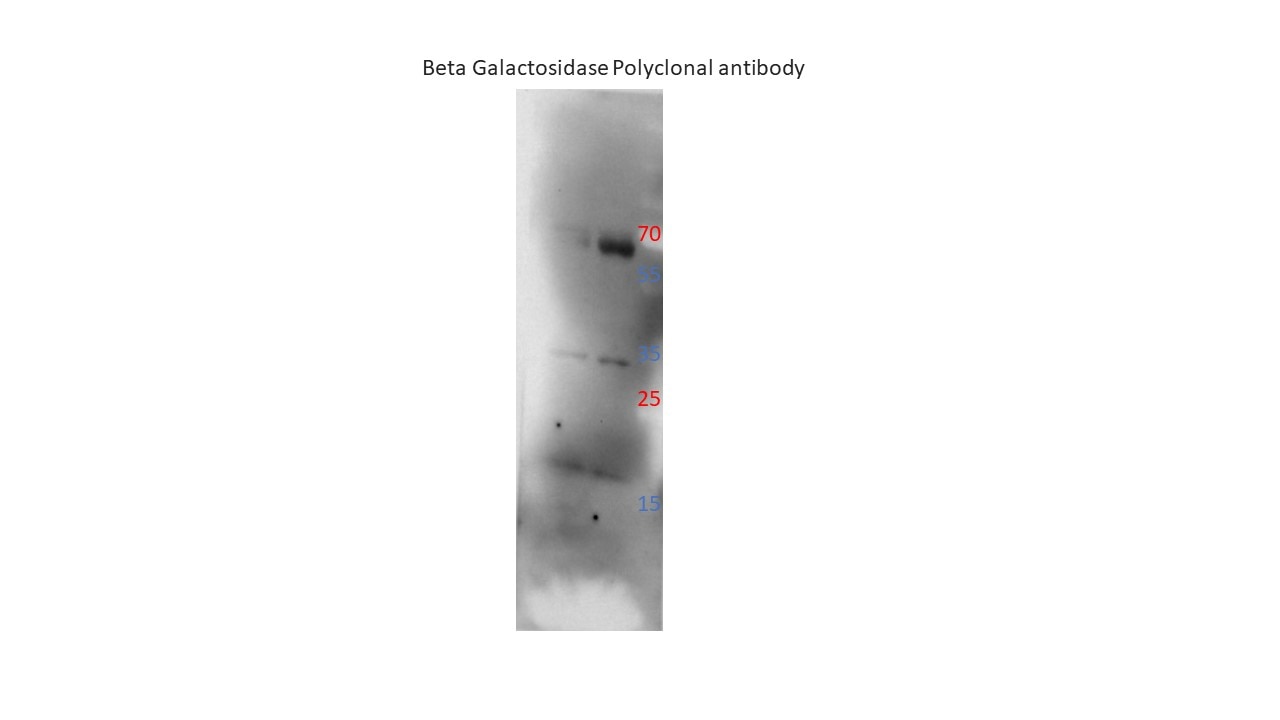 |
FH Lin (Verified Customer) (02-24-2022) | It is good for WB.
|
FH Lin (Verified Customer) (06-04-2021) | It works for skin IHC.
|
